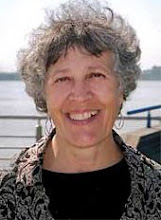Today I wandered through the stacks of the Queens College library juvenile children section. A title caught my eye--Built to Last: Building America's Amazing Bridges, Dams, Tunnels, and Skyscrapers by George Sullivan (NY: Scholastic, 2005). It's longer--12 inches--than high--nine inches which allows for two-page vertical spreads (24 inches!) of picture e.g. the Golden Gate Bridge in San Francisco and the Flatiron Building in New York. I checked it out because I wanted to read about the Hoosac Tunnel (Susan B. Anthony went sightsighting there during its construction in the 1850s), the Chesapeake Bay Bridge-Tunnel, which I've driven over/under several times,; and the U.S. Interstate Highway System, which over which I've travelled gazillion million, etc. (And why do we pick book? 1. we connect with the topic.) Sullivan organized the book into 4 time periods: The Early Republic 1790-1850; Invention and Discovery 1850-1910; Hard Times 1920-1940; A Golden Age 1950-1965; Megaprojects 1990-Present and described 17 projects. It's amply illustrated with full color and black and white photographs. The text is clearly written and engaging. Sullivan is adept at weaving in relevant context and interesing details. NOTE: he fails at writing inclusive history 101; e.g. he completely ignore Emily Roebling's indispensable role--memorialized on a plaque attached to the Brooklyn Tower--in taking over after her husband Washington suffered two attacks of the bends and was paralyzed.
She only appears as having been "given the honor of being the first to ride over the bridge." This is an inexcusable lapse on the part of the author and editors at Scholastic in a book published in 2005.
For my taste the page design has too many elements--thin and wide vertical lines of different colors that divide this from that--looks to me as if the designer was trying to simulate/evoke architectural structures. The title of each structure appears in a multicolored oval that must--at least for me--be consciously overridden in order to focus on the texts. This is a book that I would read for my enjoyment, also talk-read with Sophie, i.e. pick and choose from the text and caption to read aloud, who is interesting in bridges. (Her apartment building is beside the George Washington Bridge--one of our pending adventures is to walk across it.)
Books by the nonfiction poet and illustrator, Ruth Heller, are stacked high in my personal library. Yes, a nonfiction poet, i.e. she doesn't make up anything. I love her writing--great use of vocabulary--clever and bold--and her vivid illustrations. Heller died a few years ago, but left a legacy of words and images about animals, colors, grammar, flowers, etc. Over the years, teachers in my classes report that students love and remember Heller's first book, Chickens Aren't the Only Ones.
Wednesday, February 18, 2009
Subscribe to:
Post Comments (Atom)

1 comment:
HI, Penny,
How great to have seen the play preview! I saw Jane Fonda on TV being interviewed about performing in this new play.
About BUILT TO LAST: We have that book in the middle school library and I like it, but it is absolutely dreadful that the author did not emphasize Emily Roebling's role in the building of the Brooklyn Bridge. The author did not write about the bridge based on thorough research, for sure! I haven't read extensively about the building of the bridge, but I do remember reading that Emily went down to the bridge EVERY day after her husband could no longer do that to make sure the plans were being carried out in detail! For years now I've thought someone should write a book for young adults about her, so here's your next book!!! from Dot
Post a Comment